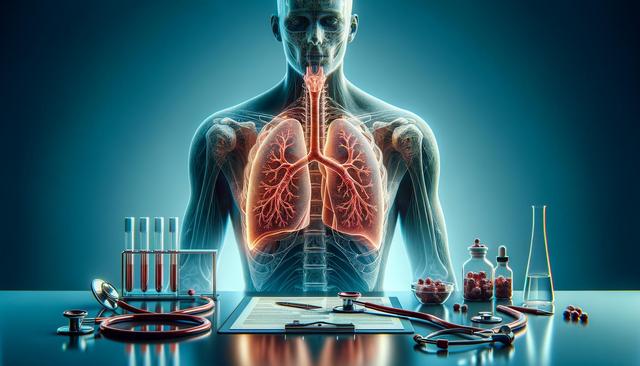Understanding Lung Cancer
Lung cancer is a condition that begins in the lungs, usually in the cells lining the air passages. It is one of the most commonly diagnosed cancers worldwide and is known for being particularly aggressive if not detected early. The disease is typically categorized into two main types: non-small cell lung cancer (NSCLC) and small cell lung cancer (SCLC). Each type progresses differently and may require distinct treatment approaches. Risk factors for lung cancer include tobacco use, exposure to radon gas, occupational hazards such as asbestos, and genetic predisposition. While smoking remains the leading cause, non-smokers can also develop lung cancer due to environmental and genetic factors.
Early detection plays a pivotal role in improving survival rates. When diagnosed at an early stage, lung cancer may be more responsive to treatment options such as surgery, radiation therapy, or targeted drug therapies. Unfortunately, lung cancer often does not present noticeable symptoms until it has progressed, making awareness and early screenings essential.
Common Early Symptoms to Watch For
Recognizing the signs of lung cancer early can have a significant impact on the effectiveness of treatment. While symptoms may vary depending on the location and stage of the cancer, there are several common warning signs that should not be ignored:
- Persistent cough that does not go away or worsens over time
- Shortness of breath, especially during routine activities
- Chest pain that may be constant or worsen when breathing deeply or coughing
- Unexplained weight loss or loss of appetite
- Fatigue or weakness not attributed to other causes
Other potential symptoms include hoarseness, recurring respiratory infections such as bronchitis or pneumonia, and the coughing up of blood. It is important to note that these symptoms can also be related to other health conditions. However, if they persist or worsen, seeking medical evaluation is crucial.
When to Seek Medical Advice
If you or someone you know experiences any of the symptoms listed above, especially if there are known risk factors such as a history of smoking or exposure to harmful substances, it is important to consult a healthcare professional. Early medical intervention can help determine the cause of the symptoms and, if necessary, initiate diagnostic testing such as chest X-rays, CT scans, or biopsies.
Prompt medical attention is particularly important for individuals aged 55 and older with a history of heavy smoking, as they are considered high-risk and may be candidates for annual low-dose CT screenings. Discussing personal risk factors with a healthcare provider can guide decisions regarding screening and prevention strategies.
Diagnostic Tools and Screening Options
Medical advancements have led to more effective diagnostic tools that can help detect lung cancer at earlier stages. Common methods include:
- Low-dose computed tomography (LDCT) for high-risk individuals
- Sputum cytology to examine mucus for cancerous cells
- Bronchoscopy, in which a thin tube is inserted into the airways to collect tissue samples
- Needle biopsy or surgical biopsy for more detailed tissue analysis
These tools are particularly useful for individuals who do not yet exhibit symptoms but fall into categories with elevated risk. Regular screenings for high-risk groups have been shown to significantly reduce mortality from lung cancer by identifying tumors before they spread. Healthcare providers use a combination of imaging, pathology, and clinical evaluation to determine the presence and type of lung cancer, which informs the most appropriate treatment strategy.
Preventive Measures and Risk Reduction
While not all cases of lung cancer are preventable, certain steps can reduce the risk of developing the disease. Chief among these is avoiding tobacco use or quitting smoking. For those who smoke, cessation programs, counseling, and medications can increase the chances of successfully stopping. Additional preventive actions include:
- Testing homes for radon gas, especially in areas known for high radon levels
- Wearing protective equipment in workplaces with known carcinogens
- Maintaining a healthy diet rich in fruits and vegetables
- Engaging in regular physical activity
For individuals with a family history of lung cancer, discussing genetic counseling or additional screening options with a healthcare provider may be beneficial. Though lifestyle changes cannot eliminate all risk, they can play a meaningful role in overall lung health and early detection.
Conclusion: The Importance of Awareness and Action
Lung cancer remains a serious health concern, but increased awareness about its early symptoms and risk factors can make a substantial difference in outcomes. For those at higher risk, regular screenings and preventive measures can contribute to early diagnosis and more effective treatment. Paying attention to subtle changes in health and seeking medical advice when symptoms arise are key steps in empowering individuals to take charge of their lung health. By fostering greater understanding and vigilance, we can support earlier detection and improved quality of life for those affected by this condition.
